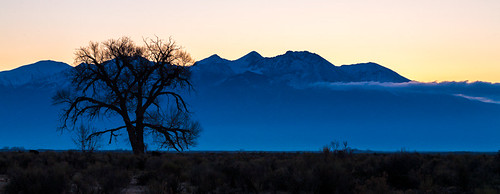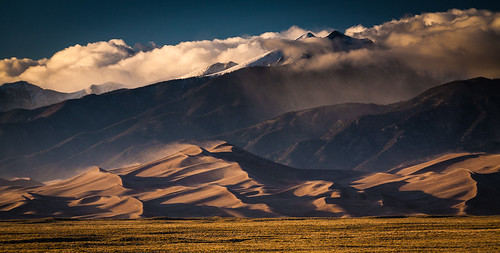Canon 5D, 70-200/2.8, 100mm, 1/15, f/11, ISO 100, tripod, Lightroom 4
It takes over 30 minutes to get from Alamosa to Great Sand Dunes, which gives one time to think and observe. I came across this location along the way. There's a KFC sign right next to it, which is probably what most people notice, but it also makes a good landmark. Regardless, the specific location is 37° 28.427'N, 105° 46.970'W. There's a nice, wide shoulder, but make sure to pull off as much as you can since the cars are zipping along at a good clip on this unwavering portion of US-160.
This is obviously a sunrise shot, with the Sun coming up to the right of Blanca Peak. I'd hoped to capture more clouds, or to get a more active sky above the peaks, but that's all the more reason to return and try again. This shot could probably also work at sunset with Blanca Peak fully illuminated, though you'd have to ensure that the tree is darkened such that it would silhouette against the background.
Sunrise shots can be challenging in San Luis Valley with the mountains and extreme weather to the east. Don't even bother with sunrise at Great Sand Dunes, which buttes right up against the Sangre de Cristo Mountains. Luckily there are plenty of other rewarding locations in the area. Nearby Alamosa National Wildlife Refuge even has some water that can make for a good foreground on a still morning. There's plenty of time to explore in the middle of the day when the light is bad.
Get out there.



